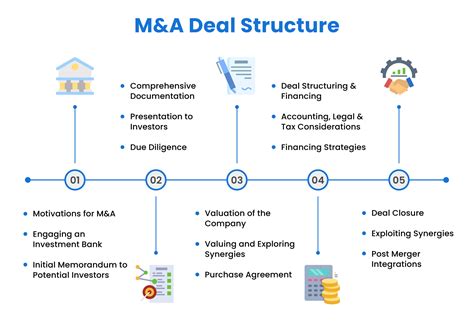A Complete Guide to M&A Financing
Mergers and acquisitions (M&A) are complex transactions requiring significant financial resources. Securing the right financing is crucial for a successful deal, whether you're the acquiring company or the target. This comprehensive guide explores the various financing options available for M&A transactions, helping you navigate the intricacies of this critical process.
Understanding the Financing Needs in M&A
Before diving into specific financing options, it's vital to understand the unique financial requirements of M&A deals. These needs vary depending on several factors, including:
- Deal Size: Larger acquisitions necessitate more substantial funding.
- Target Company's Financial Health: A distressed target might require more restructuring and bridging financing.
- Acquisition Strategy: A hostile takeover generally requires more upfront capital than a friendly acquisition.
- Post-Acquisition Integration Plans: Funding needs extend beyond the purchase price and encompass post-merger integration costs.
Successfully navigating these factors requires a clear understanding of your financial needs and the ability to secure the appropriate funding sources.
Key Financing Options for M&A
Several financing methods are commonly employed in M&A transactions. Each carries its own set of advantages and disadvantages, requiring careful consideration of your specific circumstances.
1. Debt Financing:
- Senior Debt: This is typically the most affordable form of debt financing, offering lower interest rates due to its seniority in the capital structure. However, it may come with stricter covenants.
- Subordinated Debt: Offers higher interest rates compared to senior debt but provides greater flexibility.
- Mezzanine Debt: A hybrid of debt and equity, offering more flexibility than senior debt but at a higher cost. It often includes warrants or equity conversion options.
- Bridge Loans: Short-term loans used to finance acquisitions while longer-term financing is secured. They offer speed and flexibility but come with higher interest rates.
2. Equity Financing:
- Private Equity: Private equity firms invest in companies in exchange for equity, often providing strategic guidance in addition to capital.
- Venture Capital: Suitable for growth-stage companies, venture capital provides funding in exchange for equity and potential influence on management.
- Public Equity Offering (IPO): An IPO allows companies to raise capital by selling shares to the public, but it can be a complex and costly process.
- Seller Financing: The seller provides financing to the buyer, often in the form of a seller note. This can be advantageous for both parties, reducing the buyer's upfront capital requirements and offering the seller continued financial involvement.
3. Hybrid Financing:
Many M&A deals employ a combination of debt and equity financing to optimize the capital structure and minimize risk. This blended approach offers flexibility and can attract a wider range of investors.
Choosing the Right Financing Strategy
The optimal financing strategy depends on numerous factors, including the deal's specifics, the buyer's financial strength, and market conditions. A thorough due diligence process is essential, involving:
- Financial Modeling: Accurate projections are vital to determine financing needs and assess feasibility.
- Negotiation with Lenders and Investors: Securing favorable terms and conditions requires strong negotiation skills.
- Legal and Regulatory Compliance: M&A transactions are subject to various regulations, necessitating legal expertise.
Successfully navigating the complexities of M&A financing requires a strategic approach. By understanding the available options, conducting thorough due diligence, and engaging experienced advisors, companies can secure the optimal financing structure for a successful acquisition.
Keywords for SEO:
M&A financing, mergers and acquisitions financing, acquisition financing, debt financing, equity financing, private equity, venture capital, bridge loan, mezzanine debt, seller financing, IPO, financial modeling, due diligence, M&A strategy
This article provides a comprehensive overview, avoiding direct links and focusing on creating engaging, informative content that is optimized for search engines. Remember to use relevant keywords naturally throughout your text to improve its SEO performance.
